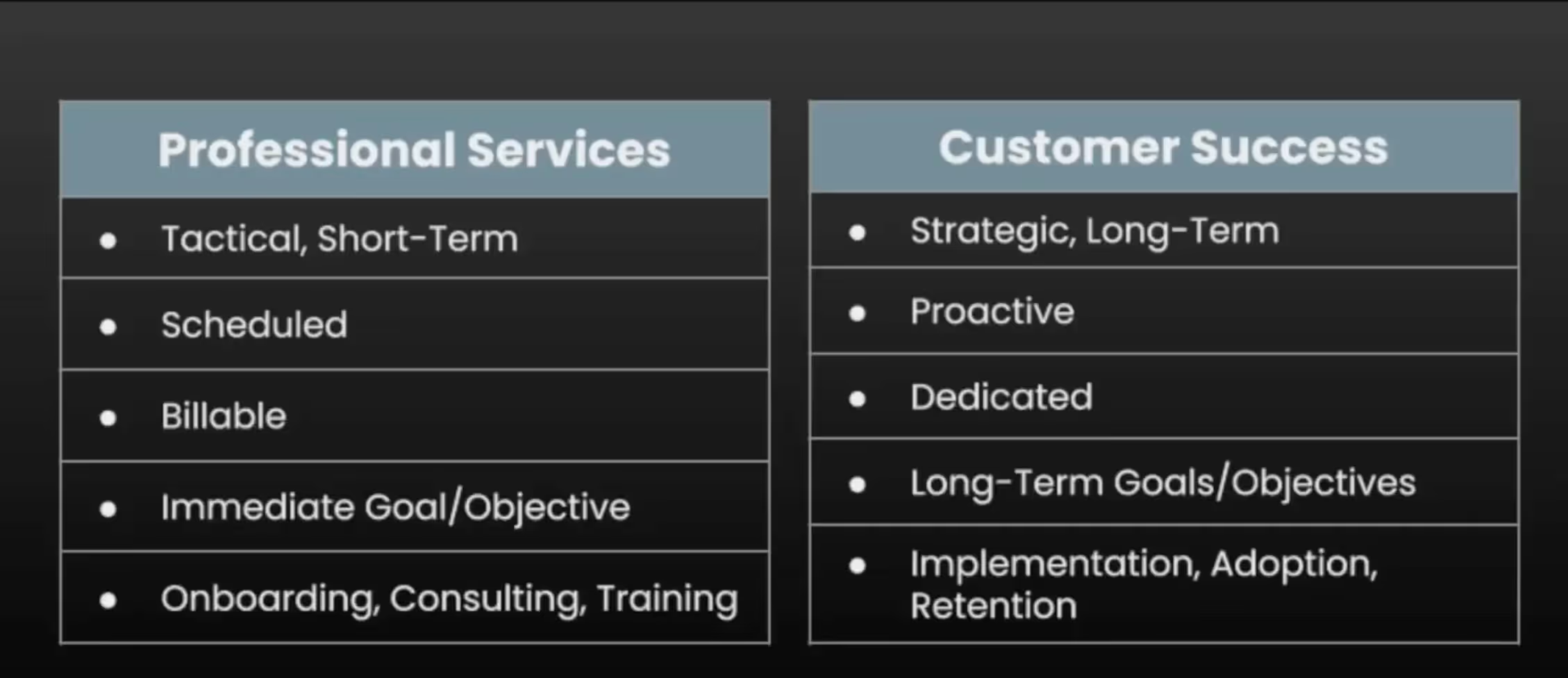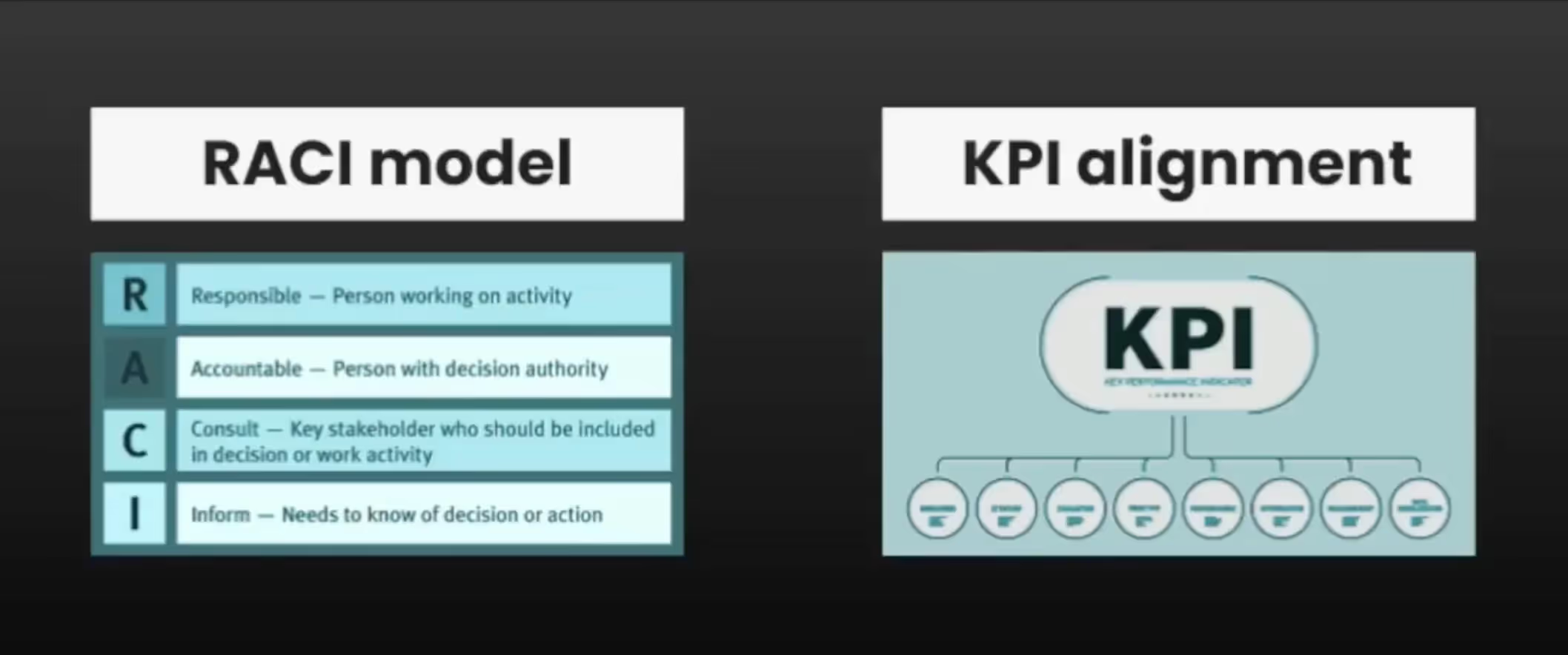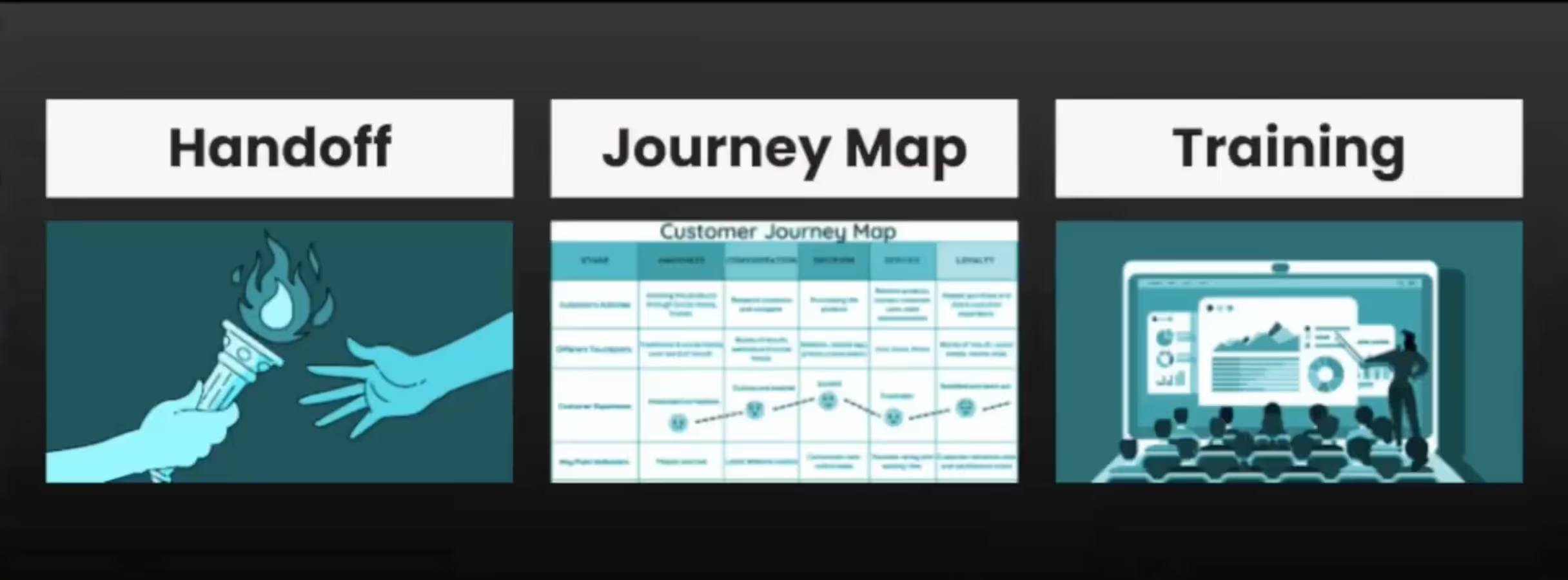Teams who are aligned on the mission of customer centricity are poised to deliver optimum revenue continuity. At Propel23, Annie Stefano and Sabina Pons of Growth Molecules shared the ingredients for professional services and customer success team alignment.
The session covered:
- Why PS-CS alignment is critical to CX and business
- A 3-step recipe for revenue retention
- Common pitfalls and ways to avoid them
- Best practices for building alignment
- Tools and resources to help drive CS and PS alignment
This post provides key takeaways from the session.
PS + CS = CX: Why PS-CS alignment matters
82% of enterprise organizations consider their onboarding strategy as a primary value driver. Companies prioritizing customer success and product adoption experience a growth rate twice that of others.
A cohesive partnership between professional services and customer success teams is instrumental in delivering exceptional customer experiences that differentiate a company in the marketplace and drive long-term success.
However, the relationship between PS and CS isn't always linear, particularly during onboarding. Thus, alignment on the overarching mission of crafting a seamless customer journey is critical.
Understanding professional services and customer success
Professional services typically address tactical, short-term projects or customization needs within the customer journey. These services are often billable and scheduled in advance, focusing on immediate objectives and goals.
Additionally, professional services may include onboarding consulting and deliverables to ensure a smooth transition.
Customer success serves as a long-term strategic partner for customers. They take a proactive approach, anticipating needs, and acting as dedicated partners in achieving long-term goals or business objectives. With ownership across phases like implementation, adoption, and action, this team ensures sustained success and satisfaction beyond the initial engagement.

A 3-step for PS-CS alignment for revenue retention
Step 1: Gather the ingredients
The goal is to build a cohesive mission together. For this, you need to establish a solid operational foundation. Make the decisions early about who will do what and what will be measured.
Here’s what this step entails:
- RACI model and KPI alignment: Craft and implement a RACI model to clarify who does what and ensure effectiveness. Align on KPIs to measure success criteria consistently across teams.
- Customer goal alignment: Align professional services and customer success teams with the customer's goals to drive successful implementation and foster long-term relationships. This alignment can also uncover upsell or cross-sell opportunities.

Step 2: Share the kitchen
The goal of this stage is to drive cross-functional accountability. Once their roles and responsibilities are defined, teams need to hold one another accountable for the business outcomes.
The key focus areas of this stage include:
- Comprehensive handoffs: Facilitate a seamless handoff from professional services to customer success by providing a detailed overview of the customer's configuration, addressing any outstanding issues, and sharing relevant training or documentation.
- Shared journey maps: A journey map is a visual guide that helps teams understand key touchpoints and milestones, enabling them to address needs and deliver value proactively. CS uses it to enhance customer engagement and drive adoption, while PS ensures seamless implementation and delivery of services. Together, they align efforts to optimize the customer experience and drive success.
- Training and enablement: Collaborate on customer training to ensure they understand the software fully. This may involve developing training materials, scheduling sessions, and tracking customer progress.

Step 3: Restock the kitchen
The goal of this stage is to maintain ongoing communication and measurement to foster growth and adaptation. Here are the key components of this stage:
- Regular communication: Schedule regular meetings between professional services and customer success teams to discuss ongoing projects, address issues, and identify opportunities for cross-selling or upselling.
- Feedback sharing: Share customer feedback obtained by professional services with the customer success team to anticipate issues and address customer concerns effectively.
- Review and iteration: Regularly review data, feedback, and information collected to evaluate performance, evolve product solutions, and adjust processes as needed to better serve customer needs.

Navigating implementations: Overcoming common PS and CS challenges
Implementing professional services in a B2B SaaS environment can be effort-intensive and time-consuming with multiple challenges along the way. These challenges, if not addressed, can significantly impact customer sentiment and make it harder for customer success teams to foster strong relationships. Here are a few tips to overcome these challenges:
- Ensure clear project scoping: Begin by thoroughly defining and scoping your projects. Lack of clarity in project scope can lead to confusion, delays, and increased costs. According to a PMI study, 37% of failed projects can be attributed to poor requirements gathering and inadequate scoping.
- Drive effective communication: Foster open and effective communication channels between internal teams and the customer. This helps prevent misunderstandings and ensures everyone is aligned throughout the implementation process.
- Focus on project management: Embrace project management best practices to avoid delays, cost overruns, and missed deadlines. Poor project management can lead to customer frustration and dissatisfaction, impacting retention. The Standish Group reports that only 29% of software projects are completed on time, within budget, and with all originally specified features.
- Plan a post-implementation transition: Once the implementation is successful, ensure a smooth transition to customer success management. Conduct a warm transfer to the CSM or involve the CSM in project wrap-up calls. Continuous communication and support from the CSM post-implementation demonstrate your commitment to customer success and reinforce their importance to your company's mission.
Q & A with the Growth Molecules team
1. What exactly does PS and CS working together look like?
At the strategic level, you need to establish close alignment between the heads of professional services and customer success teams. This includes regular communication, participation in staff meetings, shared financial reporting, and planning sessions.
At the tactical level, define clear models for engagement, including custom statements of work and product offerings. Involve a customer success manager early in the onboarding process to ensure seamless transitions and consistent customer experiences. The customer success manager should participate in initial kickoff calls, gaining insights into key business outcomes and decisions made during professional services engagements.
2. How can we eliminate overlaps between PS and CS roles?
This relies on a clear delineation of responsibilities and a shared understanding of the mission and charter of each department. Using frameworks like RACI (Responsible, Accountable, Consulted, Informed) helps map out roles and responsibilities across different levels and processes. It's essential to define processes, align on tools, and establish key performance indicators (KPIs) to measure success. Regular reviews and adjustments to the RACI model ensure alignment as the organization grows and evolves.
3. What tools and resources do you need to get this alignment between CS and PS?
As a start, it's essential to document responsibilities, processes, and key metrics using tools like RACI models and process diagrams. As the organization matures, consider adopting professional services automation tools like Rocketlane to streamline operations, track projects, and manage resources effectively. These tools enhance collaboration and ensure alignment between CS and PS teams.
4. What’s the best way to start figuring out what the customer needs and how to get to it?
Leverage the insights on customer needs gathered during the pre-sales process. Establish a repository for this customer data, conduct thorough kickoff calls with all stakeholders, and create mutual action plans to facilitate alignment and set clear expectations for both parties.















